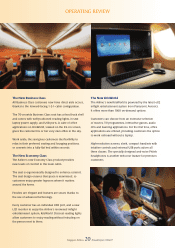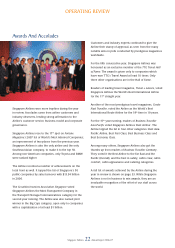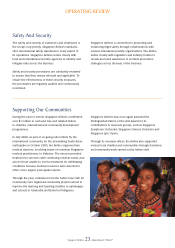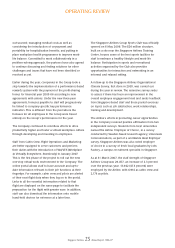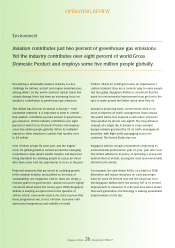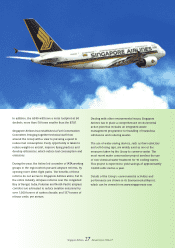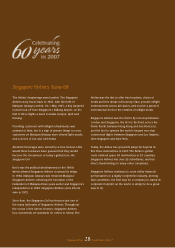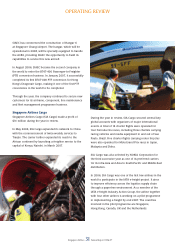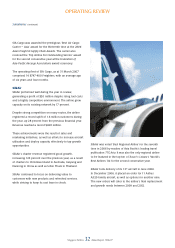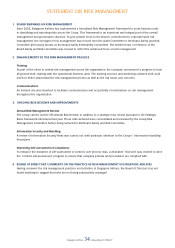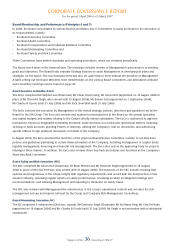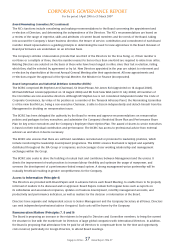Singapore Airlines 2007 Annual Report Download - page 29
Download and view the complete annual report
Please find page 29 of the 2007 Singapore Airlines annual report below. You can navigate through the pages in the report by either clicking on the pages listed below, or by using the keyword search tool below to find specific information within the annual report.
Singapore Airlines 27 Annual Report 2006-07
In addition, the A380 will have a noise footprint at 90
decibels, more than 50 times smaller than the B707.
Singapore Airlines has established a Fuel Conservation
Committee, bringing together technical staff from
around the Group with a view to pursuing a quest to
reduce fuel consumption. Every opportunity is taken to
reduce weight on aircraft, improve fl ying practices and
develop effi ciencies, which reduce fuel consumption and
emissions.
During the year, the Airline led a number of IATA working
groups in the region which pursued airspace reforms, by
opening more direct fl ight paths. The benefi ts of these
reforms do not accrue to Singapore Airlines alone, but to
the entire industry. Airspace reforms over the congested
Bay of Bengal, India, Pakistan and North Pacifi c airspace
corridors are estimated to reduce aviation emissions by
over 1,000 tonnes of carbon dioxide, and 137 tonnes of
nitrous oxide, per annum.
Dealing with other environmental issues, Singapore
Airlines has in place a comprehensive environmental
action plan that includes an integrated waste
management programme for handling of hazardous
substances and reducing wastes.
The use of water-saving devices, such as fl ow restrictors
and self-closing taps, are widely used as one of the
measures taken by the Group to conserve water. The
most recent water conservation project involves the use
of non-chemical water treatment for 10 cooling towers.
This project is expected to yield savings of approximately
14,000 cubic metres a year.
Details of the Group’s environmental activities and
performance are shown in its Environmental Report,
which can be viewed from www.singaporeair.com.
Singapore Airlines 27 Annual Report 2006-07





